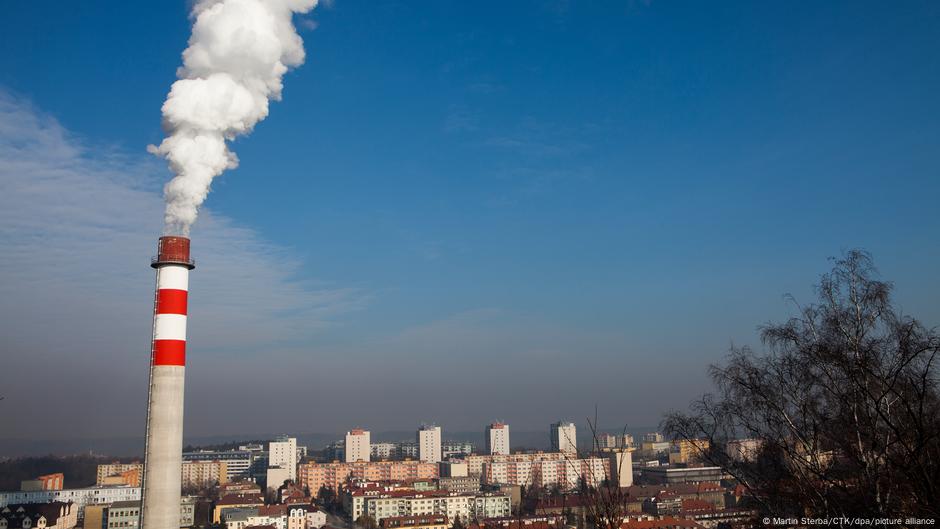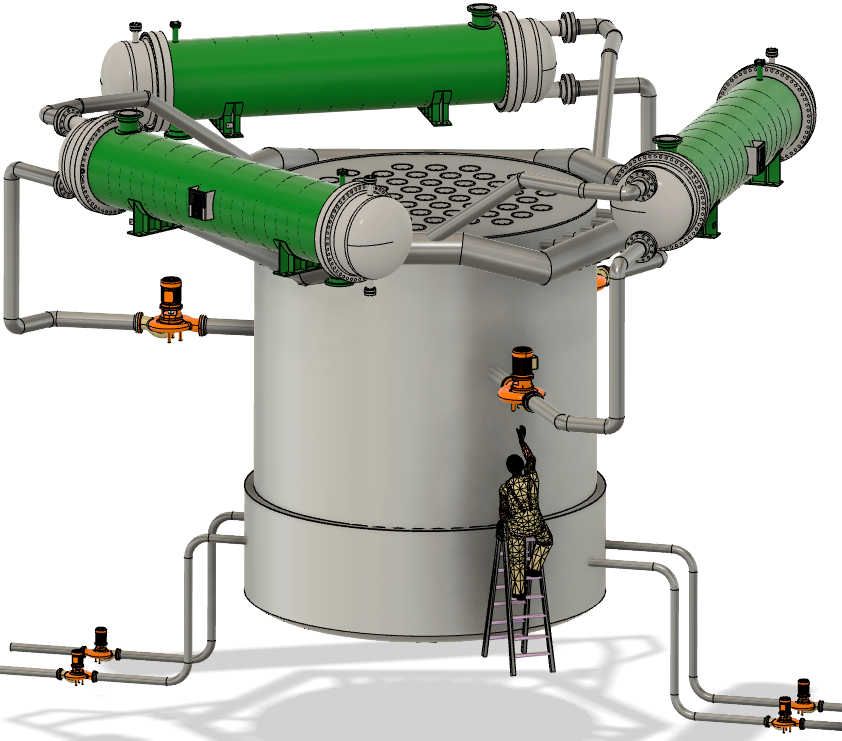Teplator: heat cities with spent nuclear rods (DW)

Czech researchers develop revolutionary nuclear heating plant – A team of scientists has come up with a radical solution to heat cities using spent nuclear rods, which they say is cost-effective and greener than natural gas. As the EU moves away from coal, many are interested.
Almost every major city in the Czech Republic has a system of combined heat and power stations that are mainly fueled by coal. However, as the European Union gradually moves away from coal as an energy source, those cities are urgently looking for alternatives. While it is technologically possible to make the transition from coal to natural gas, the heat is likely to be much more expensive as a result.
Researchers at the Czech Technical University in Prague and the University of West Bohemia in Pilsen have come up with an innovative solution: the Teplator, a system which uses the radioactive decay heat produced by spent fuel rods from nuclear reactors to heat water. The team, led by Radek Skoda, has already been granted a patent for the concept and design of what it says is a very cost-effective alternative to coal and gas-powered plants.
Skoda, of the Czech Technical University, told DW that the project was particularly noteworthy because it allows power stations to generate heat from spent fuel elements that otherwise would have to be stored and cooled at great expense for many years. (…)
Unlike in Germany and Austria, there is indeed very little resistance to nuclear energy in the Czech Republic. All the parties currently represented in parliament, even the Pirates which are part of the Greens–European Free Alliance in the European Parliament, are in favor of building more nuclear reactors. Only the Czech Green Party is against nuclear energy, but it has very little influence and polls consistently at about 2 or 3%.
However, Petr Kučera, a spokesman for the Czech Green Party, said the Teplator has two problems. "One is that it is a new technology where there is no experience with its operation," he said. " "Another problem may be the decentralization of the use of hazardous nuclear material. Instead of the current two nuclear power plants, it could be in dozens of places throughout the Czech Republic." (…)



See also:
"Le nucléaire pour produire de l’électricité ET de la chaleur" (Sfen)
Le chauffage urbain l’une des applications non électriques les plus prometteuses du nucléaire industriel pourrait tout simplement se réaliser par une modification du circuit secondaire des 58 réacteurs du parc français actuel. Pendant longtemps, l’éloignement géographique entre le lieu de production, la centrale nucléaire, et les usagers, concentrés dans les grandes villes, a été un frein au développement de la cogénération. Mais les réseaux de chauffages urbains se sont progressivement construits et l’amélioration de la technologie des lignes de chaleur permet aujourd’hui de transporter de l’eau chaude sur une distance de 100 kilomètres avec moins de 2% de perte de chaleur. Ces progrès ouvrent la voie au développement à grande échelle de la cogénération nucléaire. Cette technologie pourrait de façon réaliste subvenir à la moitié des besoins énergétiques de la France en chauffage et eau chaude sanitaire.
Cependant, si comme nous l’avons vu la faisabilité technique est démontrée, une telle décision implique d’une part une forte volonté politique pour favoriser le déploiement de réseaux permettant de transporter la chaleur sur de longues distances et d’autre part l’accord de l’Autorité de sûreté nucléaire pour ce qui concerne la modification de l’exploitation des centrales. L’investissement dans les nouvelles lignes de chaleur serait cependant assez vite rentabilisé puisqu’il permettrait à la France d’économiser chaque année au minimum 7 milliards d’euros (soit la moitié du budget consacré chaque année à l’achat d’hydrocarbures pour le chauffage dans le résidentiel-tertiaire). A terme, ce chauffage « nucléaire » permettrait de réduire de manière très importante la facture des ménages.



